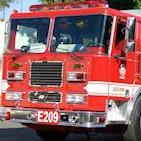
mstrang1
Investors-
Content count
418 -
Joined
-
Last visited
About mstrang1

- Birthday 02/06/1978
My Web Presence
- Website URL http://
Profile Information
- Name: Matthew Strangio
- Location Brooklyn
- Agency Stamford Fire & Rescue Dept.
-
AFS1970 liked a post in a topic: What the Fire Service can Learn from the Aviation Industry
-
Westfield12 liked a post in a topic: What the Fire Service can Learn from the Aviation Industry
-
dwcfireman liked a post in a topic: What the Fire Service can Learn from the Aviation Industry
-
The Airline industry, as a whole, and the NTSB, together actually know they have a problem when an incident occurs, and ACTUALLY TRY AND FIX THE PROBLEM. The fire service kind of does this, half assed and department by department. Or not. I can't tell you how many times I have heard people say "firemen die, it's what happens". This is unacceptable. We sweep disasters under the rug. If if the CEO of (insert your favorite airline carrier here) went on TV and said "planes crash, it happens", would you fly with them again?!
-
dwcfireman liked a post in a topic: What the Fire Service can Learn from the Aviation Industry
-
mstrang1 started following What the Fire Service can Learn from the Aviation Industry
-
As part of the Fire Officer 1 class I took at Stamford regional fire school, Glen Dube did a one day session on CRM. It was very interesting.
-
Stench60 liked a post in a topic: "Beaching" An Aerialscope
-
COH Bulldog liked a post in a topic: "Beaching" An Aerialscope
-
PCFD ENG58 liked a post in a topic: "Beaching" An Aerialscope
-
lemonice liked a post in a topic: Your "Salty Lid" Will Not Give You Cancer
-
lad45der liked a post in a topic: Your "Salty Lid" Will Not Give You Cancer
-
x635 liked a post in a topic: Your "Salty Lid" Will Not Give You Cancer
-
The outside of your helmet may not have skin contact, but if you look in the bowl, there is cloth padding that will absorb toxins (and sweat and skin oils and whatnot). Whenever you wash your gear, these pieces should be removed and laundered as well. Those pieces have contact with your hood or your skin. A quick rinse of the outside of your helmet will clean it up some and you may actually be able to tell if that burnt food smell is coming from the locked apartment or your own head.
-
Another concern about driving on soil would be any underground "obstructions", i.e. Septic tanks, oil tanks (abandoned or in use), underground electrical vaults, etc. dropping an outrigger over one of these could result in a big OOPS.
-
There is plenty of parking at West Hill, and there is parking at Roxbury School just across the street (oddly enough, on West Hill Rd).
-
One reason the article seems inaccurate, at one point it says the accident occurred at 90th and FDR, then it says Queens. I know it's just across the river, but it's definitely not accurate in that regard.
-
I have been to the gift shop at The Apartheid Museum in South Africa, Pearl Harbor, and the Holocaust Museum in DC. They usually need them to support operations at the museums.
-
While on the topic of FAST (RIT), almost nothing aggravates me more than when ICs say "send me another FAST, we are putting this one to work". If conditions are getting worse, then A) if you do need to use that FAST, this is probably around the time you will need it and won't have it, and the original FAST has (hopefully) been monitoring building stability, fire growth, etc since they arrived on scene and cannot then relay this to the new team that may or may not arrive for 15 minutes because they are "working".
-
Just because the training is available, doesn't mean that everyone will use it. You can lead a horse to water....
-
ADHD is one of the most over diagnosed disorders. I know someone was put on ADHD meds by a GP as an adult, then quickly taken off them once he saw an actual psychiatrist, who thought that the MD was nuts for prescribing them to him. He told me that the psychiatrist told him that, in his opinion, 75-80% of the people prescribed ADHD meds don't actually need them.
-
From my limited experience with these set ups, I have found two things: the hose going from the Power unit to the reel gets damaged and the entire trucks needs to be disassembled to fix it or it doesn't have enough power to overcome the extra 30' of friction loss. Or, in the event of a front end collision, much more equipment is damaged than a simple bumper.
-
I think what Bnechis meant is that this wasn't a plane in distress, a situation where units can begin to stage prior to the actual landing.
-
We did now. Thanks for posting.
-
If it can break through a wall, I can't imagine what it would do to someone who accidentally walks in front of your nozzle. Way back when I was a student at John Jay I wrote a paper on high pressure vapor nozzles that were being used in Europe. They couldn't be used for cutting, but the heat absorption was many times higher than a conventional nozzle.
-
I'm in

